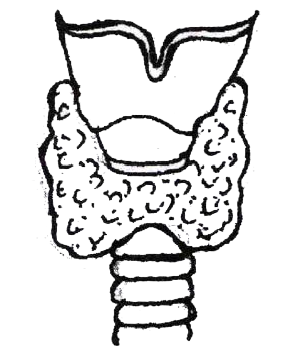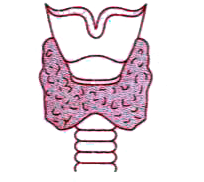Complete Solutions to SECTION-I of chapter SAMPLE PAPER 2017 of Class 10 book with complete answers and questions
| Class 10 | BIOLOGY |
| Chapter | SAMPLE PAPER 2017 |
| GURUKUL | SECTION-I |
| Number Of Questions | 31 |
| Academic Year | 2023-24 |
Name the following :
The process by which root hairs absorb water from the soil.
View SolutionName the organ where urea is produced.
View SolutionName the following:
The kind of nerve which carries both sensory and motor neurons:………….
View SolutionName the hormone responsible for the following functions
Name the pituitary hormone which stimulates contraction of uterus during child birth.
View SolutionCategorize the following activities as per the functions of the Red Cross Society and the WHO.
To educate people in accident prevention.
View SolutionThe statement given below is incorrect. Rewrite the correct statement by changing the underlined words of the statement.
The Graafian follicle, after ovulation turns into a hormone producing tissue called Corpus callosum.
View SolutionThe statement given below is incorrect. Rewrite the correct statement by changing the underlined words of the statement.
Deafness is caused due to the rupturing of the Pinna.
View SolutionThe statement given below is incorrect. Rewrite the correct statement by changing the underlined words of the statement
Gyri and Sulci are the folds of Cerebellum.
View SolutionThe statement given below is incorrect. Rewrite the correct statement by changing the underlined words of the statement.
Free movement of solutes in and out of the cell takes place across the cell membrane.
View SolutionThe statement given below is incorrect. Rewrite the correct statement by changing the underlined words of the statement
The solvent used to dissolve the chlorophyll pigments while testing a leaf for starch is Soda lime
View SolutionRewrite the terms in correct order so as to be in a logical sequence.
Fibrin, Platelets, Thromboplastin, Fibrinogen, Thrombin
View SolutionGiven below are sets of five terms each. Rewrite the terms in correct order in a logical sequence.
Example : Large intestine, Stomach, Mouth, Small intestine, Oesophagus.
Answer : Mouth `to` Oesophagus `to` Stomach `to` Small intestine `to` Large intestine.
Cochlea, Malleus, Pinna, Stapes, Incus.
View SolutionGiven below are five groups of terms. In each group arrange and rewrite the terms in the correct order so as to be in a logical sequence.
For example:
Question : Implantation, Parturition, Ovulation, Gestation, Fertilization.
Answer: Ovulation, Fertilization, Implantation, Gestation, Parturition.
Spinal cord, Motor neuron, Receptor, Effector, Sensory neuron.
View SolutionRewrite the following in correct order as to be in a logical sequence :
Uterus, Parturition, Fertilisation, Gestation, Implantation.
View SolutionRewrite in correct logical sequence
Caterpillar, Snake, Owl, Frog, Green leaves.
View SolutionChoose the ODD one out of the following terms given and name the CATEGORY to which the others belong :
Aqueous humour, Vitreous humour, Iris, Central canal
View SolutionChoose the ODD one out of the following terms given and name the CATEGORY to which the others belong :
Formalin, Iodine, DDT, Lime
View SolutionChoose the ODD one out of the following terms given and name the CATEGORY to which the others belong :
(I) ACTH, TSH, ADH, FSH
(iii) Insulin, Adrenaline, Pepsin, Thyroxine.
View SolutionChoose the odd one out of the following set of terms given and name the category to which the others belong:
(i) Phosphate, RNA, Sugar, Nitrogenous base.
(ii) Urethra, uterus, urinary bladder, ureter.
(iii) Cyton, Photon, Axon, Dendron.
(iv) Haemoglobin, glucagon, iodopsin, rhodopsin.
(v) Dendrites, Medullary Sheath, Axon, Spinal cord.
View SolutionChoose the ODD one out of the following terms given and name the CATEGORY to which the others belong :
Bile, Urea, Uric acid, Ammonia
View SolutionRewrite and complete the second part:
Eye : Optic nerve :: Ear:
View SolutionGiven below are groups of terms. In each group the first pair indicates the relationship between the two terms. Rewrite and complete the second pair on a similar basis.
Adenine: Thymine: : Cytosine :
View SolutionGiven below are groups of terms. In each group the first pair indicates the relationship between the two terms. Rewrite and complete the second pair on a similar basis.
TT : Homozygous : : Tt:_______________
View SolutionGiven below are group of terms. In each group the first pair indicates the relationship between the two terms. Rewrite and complete the second pair on a similar basis.
Example : Oxygen : Inspiration :: Carbon dioxide : Expiration
Foetus: Amnion :: Heart : ____.
View SolutionGiven below are groups of terms. In each group the first pair indicates the relationship between the two terms. Rewrite and complete the second pair on a similar basis.
Adenine: Thymine: : Cytosine :
View SolutionMatch the items given in Column A with the most appropriate ones in Column B and rewrite the correct matching paris .

View SolutionThe diagram given below represents the location and structure of an endocrine gland. Study the same and answer the questions that follow:

(i) Name the endocrine gland shown in the diagram.
(ii) Name the secretion of the gland which regulates basal metabolism
(iii) Name the mineral element required for the synthesis of the above mentioned hormone.
(iv) Name the disease caused due to undersecretion of the above mentioned hormone in children.
(v) Name the disease caused due to hypersecretion of the above mentioned hormone .
View SolutionThe diagram given below represents the location and structure of an endocrine gland. Study the same and answer the questions that follow:

(i) Name the endocrine gland shown in the diagram.
(ii) Name the secretion of the gland which regulates basal metabolism
(iii) Name the mineral element required for the synthesis of the above mentioned hormone.
(iv) Name the disease caused due to undersecretion of the above mentioned hormone in children.
(v) Name the disease caused due to hypersecretion of the above mentioned hormone .
View SolutionThe diagram given below represents the location and structure of an endocrine gland. Study the same and answer the questions that follow :

Name the mineral element required for the synthesis of the above mentioned hormone.
View SolutionThe diagram given below represents the location and structure of an endocrine gland. Study the same and answer the questions that follow :

Name the disease caused due to undersecretion of the above mentioned hormone in children.
View SolutionThe diagram given below represents the location and structure of an endocrine gland. Study the same and answer the questions that follow :

Name the disease caused due to hypersecretion of the above mentioned hormone.
View Solution
SECTION-I questions and complete solutions for chapter SAMPLE PAPER 2017 of EVERGREEN BIOLOGY (ENGLISH) of Class 10